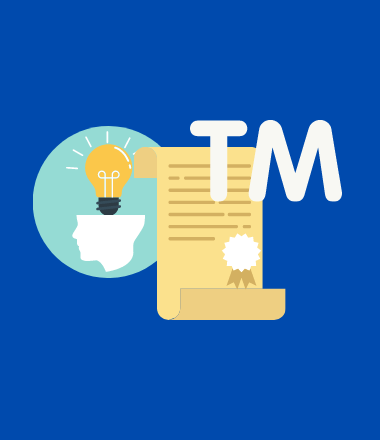Trademark Renewals: How to Renew a Registered Trademark

Table of Contents
Trademarks are a normal part of life. We are surrounded by trademarked logos, words, symbols, designs, devices, and more. While trademarks are an intellectual property protection staple used by businesses and individuals alike, the process of registering a trademark and renewing it might seem complicated for the uninitiated. However, due to the many benefits of registering and maintaining a trademark registration, it is important to know how to register and renew a trademark.
What is a Trademark?
A trademark can be defined as a type of intellectual property that protects recognizable signs, designs, or expressions of a product, service, or individual. These distinct marks or characteristics have an economic benefit that contributes to the brand they help create. As such, it is important for trademark holders to gain some form of legal protection in order to ward off imitators and copycats.
Trademarks utilize two main symbols as identifiers. The first is the ™ symbol has no legal bearing as it can be used by anyone without registering the trademark. The other symbol is ® which distinguishes a registered trademark.
Notably, while trademarks identify the brand owner they can also be licensed for use by other parties. For instance, franchising allows various business owners to benefit from a brand's reputation and market share by using the parent company's name, branding, and other collateral. In this way, the brand is able to expand its reach without the expense and risk associated with expanding into new markets and locations. In this way, the franchise alone bears this risk.
However, if anyone makes use of trademarked goods without permission, this person will be in violation of trademark laws and guilty of producing counterfeit products and or brand piracy. In response, the trademark owner can take legal action resulting in the goods being destroyed or confiscated and the accused paying a hefty fine. While some legal territories allow owners to file against the infringement on unregistered trademarks, these owners do not enjoy the same rights, protections, and benefits that registered trademark owners enjoy.
Trademark validity ranges from less than 3 years to over 10 years depending on the rules of the country.
Benefits of Registered Trademarks
As previously stated, a registered trademark affords the owner greater protection in comparison to an unregistered trademark. However, that is not the only benefit of registering a trademark. The owner also stands to benefit from:
- Freedom from bearing the burden of proof in the case of infringement arising. The trademark owner is freed from having to prove their right to file a complaint as there will be a legal record that can be cited as proof to enforce the claim. On other hand, with an unregistered trademark, the burden of proof lies with the owner to prove their claim. This can lead to financially draining legal battles spanning years.
For example, Steve Jobs was sued twice by the Beatles for "apple". The Beatles founded Apple Corps, a music company almost ten years before Jobs founded Apple Inc. The first time the two settled after Jobs paid a cash settlement and agreed to never become a direct competitor of Apple Corp. However, Apple Corp later sued Jobs again after Apple Inc launched iTunes. In the end, Jobs purchased the "Apple" trademark from the Beatles. - Registering a trademark protects the owner from accidentally infringing on an existing trademark. A part of the trademark registration process is checking that there is no pre-existing claim on the symbols to be trademarked within the registration jurisdiction. As such, owners can avoid paying legal fees and fines as the likelihood of a claim diminishes significantly.
- Meanwhile, registering a trademark helps future trademark owners as they can easily learn that their trademark has a prior claim. As such, trademark owners must apply for registration within each region or jurisdiction they operate. The Paris Convention of 1883 allows for trademark registrations filed in its member states to use the date of the first registration when filing in subsequent territories. In this way, the Convention allows for the trademark registered first within its member states to take precedence.
- Within the territories where your trademark is registered, the state is obligated to enforce your rights should you be entitled to them according to prevailing local laws. This includes preventing counterfeits from being imported into the country. However, you as the trademark owner will still need to hire legal representation to enforce your rights.
- Registered trademarks can use the ® symbol which indicates that the mark is registered. This distinction can distinguish your brand from competitors.
- If your roadmap includes global expansion or operating in foreign countries, you can use your existing registration to file for registration in other nations. As previously mentioned, this could give you an edge against competitors using similar trademarks.


What is Trademark Renewal?
Trademark renewal is a legal procedure that prolongs the existence of a registered trademark. It usually requires the submission of an application to the appropriate trademark office and fulfilling specific conditions, such as paying fees and providing evidence of continuous use of the trademark in commerce. The primary objective of trademark renewal is to uphold the proprietor's exclusive rights to use the trademark and prohibit others from using comparable marks in association with similar goods or services. The renewal process can encompass addressing multiple legal and administrative obstacles and keeping abreast of evolving rules and standards.
How to Renew a Trademark Registration
Once you register your trademark it is important that you prevent the registration from lapsing. This is because registered trademarks are only effective provided that they have not expired. If infringement occurs after the registration has lapsed, this could result in a legal headache. Thus, to avoid this here is how to renew a trademark registration.
Trademark owners can either renew their trademark registration on their own using the governing authority's official channel, paying the renewal fee and other applicable conditions as per the jurisdiction in question.
Trademarks that are not renewed within six months after expiration will be removed by the ministry from the trademark register. Following this, no other party can file for the removed trademark within a period of three years. Within the three-year period, only the trademark owner who initially registered the trademark can re-apply for the trademark registration. However, after the three years have lapsed anyone can apply to register the trademark.
Conclusion
Managing trademark renewal is simple, provided the owner has only one registration in one jurisdiction to manage. Once the trademark owner has several trademark registrations across multiple jurisdictions, renewal management becomes a bit more complex. In this case, the trademark owner can appoint an agent like Abou Naja Intellectual Property to manage their trademark applications and renewals.
Contracting an agent to manage your trademark application and renewals will help eliminate the risk of incurring fines for failure to renew the trademark on time. In addition, it will help you ensure that your trademark is not canceled for lack of commercial use. In turn, this will help you focus your business energy and resources towards your primary objectives.
To learn more about trademark renewals and other intellectual property services, please contact us at [email protected].






